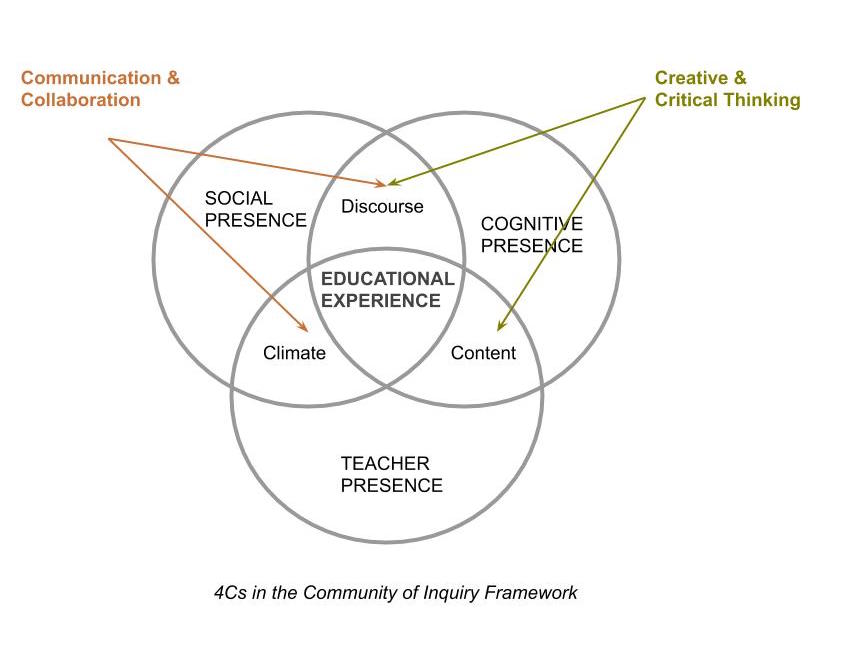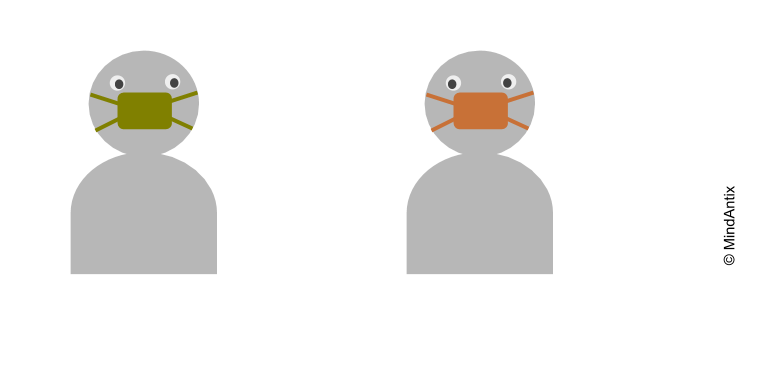The rising infection rates in the current pandemic is forcing many school districts across the nation to start with a remote learning model in Fall. For teachers who had primarily taught in person earlier, structuring their learning to fit the new model can seem like an intimidating task.
Beyond the challenges of understanding how to use technology tools effectively for instruction, there is an additional risk. 21st century skills like creativity, critical thinking or collaboration, might not get enough attention which will impact students’ overall development. These skills aren’t built in isolation. Instead, students develop these skills while interacting with their peers and teachers.
So, how do we ensure that students continue to build these crucial skills when learning occurs in a remote fashion?
Community of Inquiry
Effective remote learning requires the development of healthy communities as outlined in the community of inquiry framework. Three essential elements – teaching presence, social presence and cognitive presence – interact dynamically in the learning process.
Cognitive presence is the extent to which learners are able to construct meaning through reflection or dialog. Social presence is the ability of participants to bring their unique personalities to the community so others view them as “real people.” Social presence directly impacts social emotional learning (SEL) and indirectly supports cognitive presence when learners discuss ideas with each other. Teacher presence has two important roles – to design the content and activities for learners, and to facilitate the social and cognitive presence to achieve learning goals.
The framework also applies to 21st century skills and the figure below shows how the 4Cs map to the framework.
Communication and Collaboration
The first step in designing an effective remote learning experience is to set the right climate by focusing on healthy communication and collaboration. A good climate powers the social and cognitive presence and improves learning outcomes. Here are some tips to improve communication and collaboration among students:
- In a remote setting, students don’t get an opportunity to get to know their peers in an organic fashion. This is especially true for students new to the class or school. Consider incorporating opportunities where students share about themselves – their hobbies, likes/dislikes etc. You can also create time for students to simply chat with each other for a few minutes at the beginning or end of your remote session.
- Have students come up with rules of engagement for group discussions. These rules can include ensuring everyone takes turns, assigning roles, and critiquing ideas respectfully. Assigning one person to monitor the discussion and explicitly call on people who haven’t had a chance to speak is another way to ensure all voices are included.
- Collaboration can also be enhanced by using technology effectively. We found high engagement when students were collaboratively editing a document while being able to talk to each other through video conferencing. Students who were shy in group conversations were able to offer more ideas by simply editing the document, and more ideas got incorporated as a result.
Creative and Critical Thinking
Creativity and critical thinking can be weaved into both discourse and content. Here are some tips to incorporate these skills into learning:
- Open-ended projects, that are both minds-on and hands-on, provide an opportunity for students to build creative and critical thinking. A well designed project includes opportunities for students to explore ideas, exercise different cognitive thinking patterns like associative or analogical thinking, self-evaluate ideas and solutions, and iterate if necessary. Projects that use simple materials can easily be implemented in a remote setting.
- When students reflect on the topic before having group discussions, the outcome is better. For brainstorming ideas, the quality and originality of ideas is higher when students first think of ideas on their own before bringing them to the group. The creativity of ideas is further enhanced when students try to build on each other’s ideas (using improv’s “Yes, and” approach). Similarly, when students first research a discussion topic on their own, they are able to bring more facts into the group discussion and improve critical thinking outcomes.
In-person instruction is effective as the core element of social presence occurs naturally. However, intentionally incorporating social aspects that build a healthy community and promote meaningful dialog can make remote learning equally powerful.
The original and longer version of this article was first published on edCircuit.


